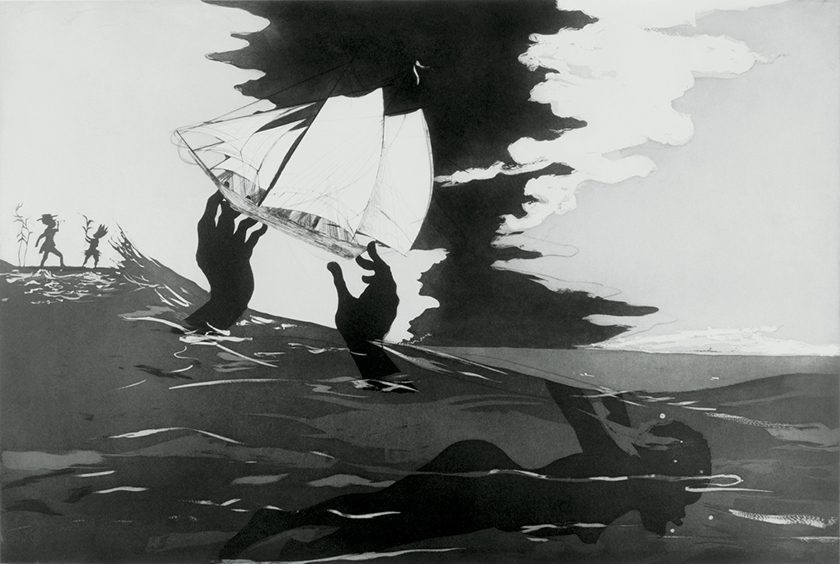Philadelphia Museum of Art, Philadelphia, PA, United States
10 Jan 2015 - 05 Apr 2015

no world, 2010, from the series An Unpeopled Land in Uncharted Waters, by Kara Walker (Philadelphia Museum of Art: Purchased with the Marion Stroud Fund for Contemporary Art on Paper, 2010-142-1) © 2014 Kara Walker
Represent: 200 Years of African American Art covers the early 1800s to the present day and displays a range of subjects, styles, mediums, and traditions. More than fifty artists are represented, including Horace Pippin, Jacob Lawrence, Martin Puryear, Carrie Mae Weems, and many more.
From compelling stories to innovative methods, Represent explores the evolving ways in which African American artists have expressed personal, political, and racial identity. Showcasing a diversity of creative practices, individual stories, and original ideas, Represent highlights the Museum’s wide collections of work by African American artists. Established in 1899 with the acquisition of Henry Ossawa Tanner’s painting The Annunciation (1898), the Museum’s holdings in this area have since grown significantly, especially through purchases and gifts made during the past three decades.
Represent celebrates the publication of a major catalogue of highlights from the Museum’s holdings of work by African American artists. Written by Gwendolyn DuBois Shaw, with an introduction from Richard J. Powell, the book expands on the exhibition with thematic essays, extended object entries, and spotlights on the collection’s greatest strengths. The exhibition is also accompanied by a full range of public programs and educational resources, including community events in celebration of Martin Luther King, Jr. Day.
The exhibition is generously supported by The Pew Charitable Trusts and The Kathleen C. and John J. F. Sherrerd Fund for Exhibitions. The publication is supported by the Center for American Art at the Philadelphia Museum of Art, The Women’s Committee of the Philadelphia Museum of Art, Dr. Constance E. Clayton, Marguerite and Gerry Lenfest, Marion Stroud Swingle, and other generous individuals.